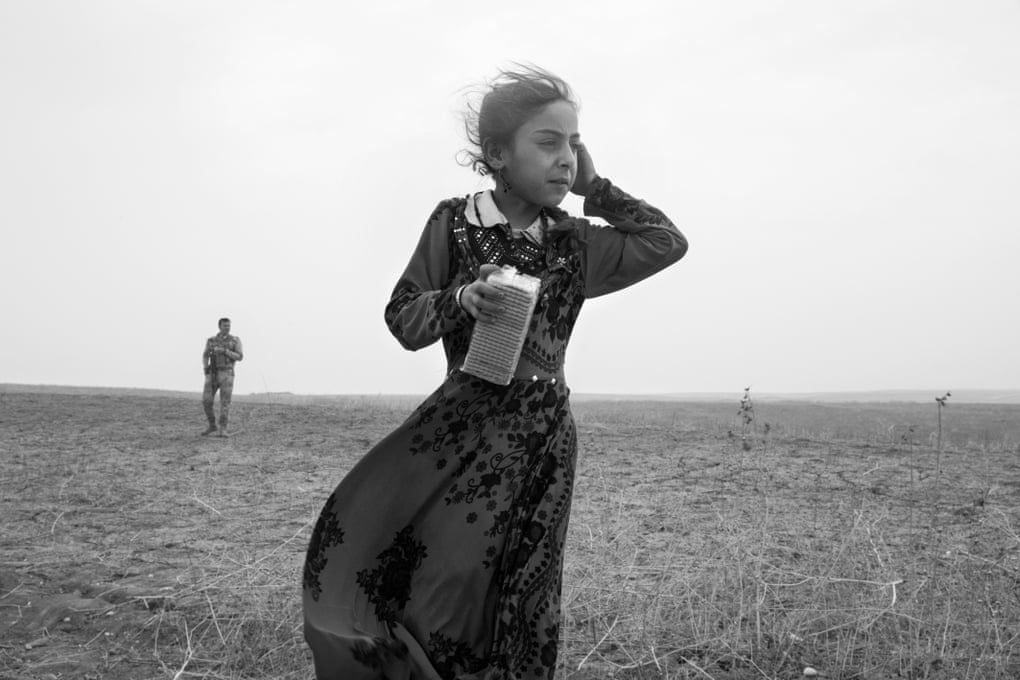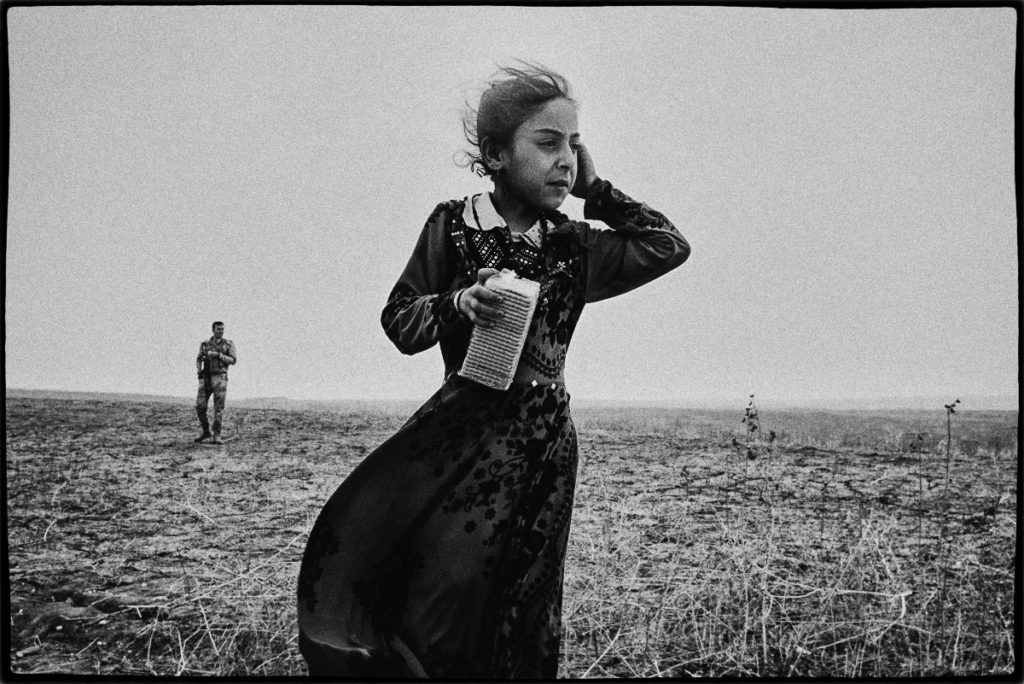
Paolo Pellegrin’s Refugees from the village of Bajurbuk, near Bashiqa. Told by ISIS that they were to be moved to Mosul the following day, the village residents fled their homes in the middle of the night and took refuge behind Peshmerga lines. Iraq, 2016, © Paolo Pellegrin
I ran across this stunning photo in The Guardian the other day. It’s by Paolo Pellegrin, a member of the Magnum Photos agency and winner of ten World Press Photo awards. There’s something timeless about the photo, harkening back to the best photojournalism of the Leica era. What interests me is his choice of B&W, which is a conscious nod to the traditional mid-century photo journalist aesthetic even though he’s fully digital – he shoots with a Canon 5d with a limited selection of lenses. Unlike most zoom-happy digiphiles, Pellegrin restricts his use to 28mm, 35mm, and 50mm primes, which itself betrays his film era roots. He retains some misgivings about digital: “In general, I embrace digital photography as an evolution of the medium, but I dislike the ease with which it can be manipulated. When you deal with charged issues, like people in war, you need to be able to trust the photographer.”
Unfortunately, IMO, he hasn’t reached far back enough for the traditionalist nod. The photo, which I grabbed from his website and thus presumably is printed to his specifications, suffers from that ‘thin’ ‘brittle’ look of much of digital B&W ( Heidegger calls animal consciousness “world-poor” in contrast to human consciousness [he’s wrong]; I think of digital capture as “reality-poor” in contrast to film capture [I’m right]). It would be much better as a ‘film’ image I think, so I’ve taken the liberty of reconfiguring it to how I see it. You may or may not agree.
What’s instructive is how easy it is to convert an obvious digitally captured image to one that looks indistinguishable from something shot with an M4 and some Plus-X. That being the case, do we really need those old film cameras or is that just one more affectation the passage of time is proving wrong? More interestingly, is the “film” look itself now an anachronism, a ‘manipulation’ that Pellegrin thinks we shouldn’t trust? If so, are we now then, by default, stuck with world-poor digital rendering?

That’s Better (Apologies to Paolo Pellegrin)
Hits: 12
